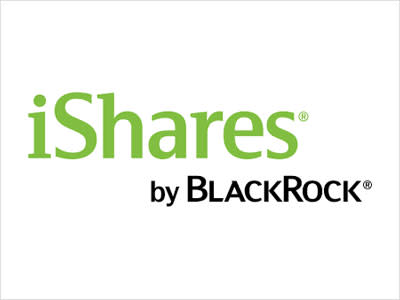BlackRock has managed index portfolios since 1971
This ETF invests in a range of small-sized US companies
It’s a simple, low cost way to track the S&P SmallCap 600 Index
How it fits in a portfolio
An ETF is a basket of investments that often includes shares or bonds. They tend to track the performance of an index such as the S&P SmallCap 600 Index and trade on stock exchanges, like shares. This means their price fluctuates throughout the day.
The iShares S&P SmallCap 600 ETF invests in 600 small-sized US companies. Smaller companies usually make more of their money domestically, so they’re less reliant on foreign economies than some of the larger, more global, companies in the US.
Smaller companies are often among the most innovative and offer lots of growth potential, although they are more volatile and higher risk than their larger counterparts.
An ETF is one of the simplest ways to invest and can be a low-cost starting point for an investment portfolio aiming to deliver long-term growth. This ETF could provide some diversification to a portfolio focused on shares in larger companies. It also allows exposure to more domestically focused companies in the US.
Manager
Dharma Laloobhai is Co-Head of BlackRock’s EMEA Index Equity International Portfolio Management team. She’s responsible for fund managers based in London who manage developed and emerging market iShares equity index funds and ETFs.
While Laloobhai leads the team, each ETF at BlackRock has a primary and secondary manager, though in practice a broader team helps to manage each ETF. The wider team is well-resourced and experienced in index investing.
Process
This ETF aims to track the performance of small-sized companies in the US, as measured by the S&P SmallCap 600 Index. It does this by investing in all 600 companies in the index and in the same proportion. This is known as full replication and should help the ETF track the index closely.
The ETF currently has a large amount invested in financials and industrials which make up 19.05% and 18.04% of the ETF respectively as of 30 April. Other key sectors include consumer discretionary, technology and healthcare.
In any ETF, taxes, dealing commissions and the cost of running the ETF all drag on performance. BlackRock uses a system to help it determine the most efficient way to trade. It also cross trades internally across all its index funds and ETFs when there’s an index rebalance. This helps to reduce costs.
The ETF can lend some of its investments to others in exchange for a fee in a process known as stock lending. This offsets some of the costs involved with running the ETF. Since BlackRock’s lending program started in 1981, only three borrowers with active loans have defaulted. In each case, BlackRock was able to repurchase every security out on loan with collateral on hand and without any losses to its clients. Even so, stock lending adds risk.
As this ETF is listed offshore investors aren’t usually entitled to compensation from the UK Financial Services Compensation Scheme.
Culture
BlackRock is currently the largest asset manager in the world, running around $11.6trn of assets globally as of March 2025. The company was founded by eight partners including current CEO Larry Fink and is known for both active and passive strategies. Employees at BlackRock are encouraged to hold shares in the company so that they are engaged with helping the company perform well and grow. The iShares brand represents BlackRock's family of index tracking and exchange-traded funds.
As the world's largest asset manager, and with lots of resource and knowledge under its belt, BlackRock benefits from unique access to the marketplace, which can help reduce trading costs. BlackRock is also a pioneer in the passive investment space and has a track record of innovation in this part of the investment market.
The team running this ETF also works closely with various equity and risk departments across the business. We believe this adds good support and challenge on how to run the ETF effectively.
ESG Integration
BlackRock was an early signatory to the Principles for Responsible Investment (PRI) and has offered Environmental, Social and Governance (ESG)-focused funds for several years, including through its iShares range of passive products. But it only made a company-wide commitment to ESG in January 2020. Following that announcement, the company promised to expand its range of ESG-focused ETFs, screen some thermal coal companies out from its actively managed funds and require all fund managers to consider ESG risks.
BlackRock’s Investment Stewardship Team aims to vote at 100% of meetings where it has the authority to do so. The Investment Stewardship team engages with companies, in conjunction with fund managers, and the results of proxy votes can be found on the BlackRock website’s ‘proxy voting search’ function.
BlackRock has courted controversy in recent years for failing to put its significant weight behind shareholder resolutions aimed at tackling climate change. It responded by committing to be more transparent on its voting activity and providing rationales for key votes.
BlackRock raised further concerns in 2022 when it indicated it might support fewer shareholder proposals based on environmental and social issues in the future. But its support for shareholder resolutions has fallen dramatically, from 40% in 2021 to just 4% in 2024. BlackRock argues that many of the resolutions were overreaching, lacked economic merit or didn’t promote long-term shareholder value, but this reasoning has been met with some scepticism.
In 2024, BlackRock announced that its US arm would step back from the Climate Action 100+ collective engagement initiative, citing legal considerations, although it suggested its international arm would remain a member.
The iShares S&P SmallCap 600 ETF tracks an index that doesn’t specifically integrate ESG considerations into its process. This ETF can therefore invest in shares issued by companies in any sector, in line with the index.
Cost
The ETF currently has an ongoing annual fund charge of 0.30%. The annual charge to hold ETFs in the HL ISA or SIPP is 0.45% and in the HL LISA is 0.25% (capped at £45 in the ISAs and £200 in the SIPP). There are no charges from HL to hold ETFs within the HL Fund and Share Account or HL Junior ISA.
As ETFs trade like shares, both a buy and sell instruction will be subject to the HL share dealing charges.
Performance
Over the last 10 years, this ETF has tracked the S&P SmallCap 600 Index closely, gaining 120.33%* during this time. As expected from an ETF, it’s fallen behind the benchmark over the long term because of the costs involved. However, the tools used by the managers have helped to keep performance tight to the index. Remember, past performance isn’t a guide to the future.
Large US companies known as the ‘magnificent seven’ have dominated stock market returns in recent years due to advancements in Artificial Intelligence (AI). While higher interest rates and inflation have had a bigger impact on smaller companies as the valuation of smaller companies is more reliant on future earnings growth and cashflows.
Smaller companies performed strongly after the US election due to expectations that Trump’s policies would benefit more domestically focused companies the most. The Federal Reserve (Fed) also lowered interest rates in September for the first time in four years and rate cuts tend to be positive for smaller companies.
However, the US stock market has underperformed compared to most other markets so far in 2025 and smaller US companies have lagged their larger counterparts. This follows concerns that Trump’s proposed policies, especially on tariffs, could hit growth and potentially cause inflation to rise again.
Given BlackRock's size, experience and expertise running ETFs, we expect the ETF to continue to track the index well in future, though there are no guarantees.
Annual percentage growth
Apr 20 – Apr 21 | Apr 21 – Apr 22 | Apr 22 – Apr 23 | Apr 23 – Apr 24 | Apr 24 – Apr 25 | |
|---|---|---|---|---|---|
iShares S&P SmallCap 600 ETF | 60.36% | 0.35% | -4.59% | 12.27% | -8.53% |


